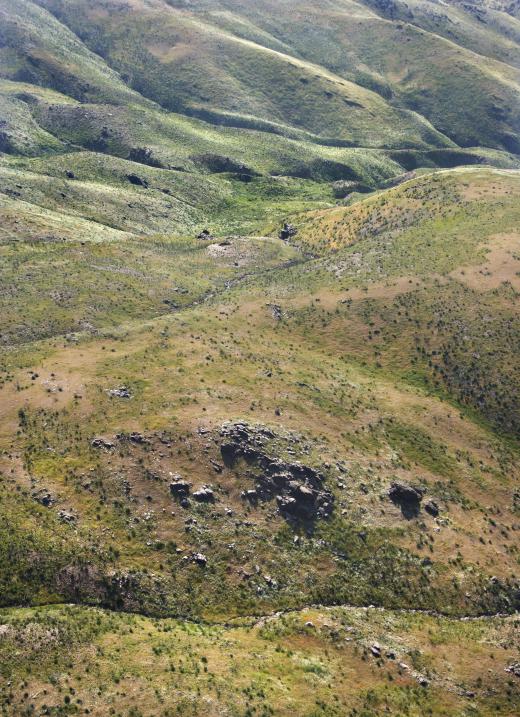What are Contour Lines?
Topography is a field that explores the surface of land. The findings are often documented on topographic maps. Such maps usually contain many lines, known as contour lines. These are used to reveal the shape of the surface and to denote the elevation of various areas.
It may be easier to understand contour lines if their functions are accessed individually. One function of these markings is to show how high or low the surface is in a particular place. This is usually referred to as elevation.

Sea level is the point where the surface of water and the surface of land are equal. The elevation of this point is zero. Contour lines are generally comparative to sea level. These markings will show how much higher or lower than sea level an area is.
The space between each contour line is known as the contour interval. This is what allows a person to determine elevation in numerical terms. On a topographic map, a person should see that some lines are darker than others. The varying tones denote varying contour intervals.
The darker lines are called index contours. Instead of trying to label every line with a number, which could result in a jumbled and confusing diagram, only certain lines are labeled. The number representing each index contour should increase in equal increments. Therefore, if the first index contour is 10, then the next must be 20.
Between two index contour lines, a person should find four lighter colored lines. Each of these will also have equally ascending increments but not as large as those represented by the index contours. The contour interval of these lighter lines should equally represent the space between the two index contours. If the first index contour is 10 and the other is 20, then the four lines between should represent 12, 14, 16, and 18.
Arranging contour lines in this way provides increased accuracy. It also prevents a person from having to do too much calculating. A person must check each map because contour lines can be represented by various measurements, such as feet, miles, or meters.
The second function of contour lines is surface definition. These lines show what an area looks like. Some maps use an overhead view, which shows what the land should look like if a person is above looking down. For example, if an island was a perfect square, the contour lines would reveal this. If, however, there was a perfectly circular mountain on that island this would also be shown.
AS FEATURED ON:
AS FEATURED ON:











Discussion Comments
@nony - I’ve seen both types. Some of the maps I’ve seen have been from an overhead view, and had a few numbered contoured lines separating various levels of elevation. The whole map was surface shaded, almost like a 3D model, and the shading helped to enhance the depth of the scene.
I think regular contour maps that have the lines but don’t have the shading are a little harder for me to understand, personally.
Most of the countour lines I’ve seen on topographic maps displayed the data in a three dimensional cube and used color shading to represent the various stages of elevations.
To me, this is the easiest way to understand the data rather than worrying about locating indexed numbers for each contour line. Nowadays a lot of this stuff is done in computer software too so you can easily view the map from a variety of different angles that make it easier to understand the elevation.
Post your comments